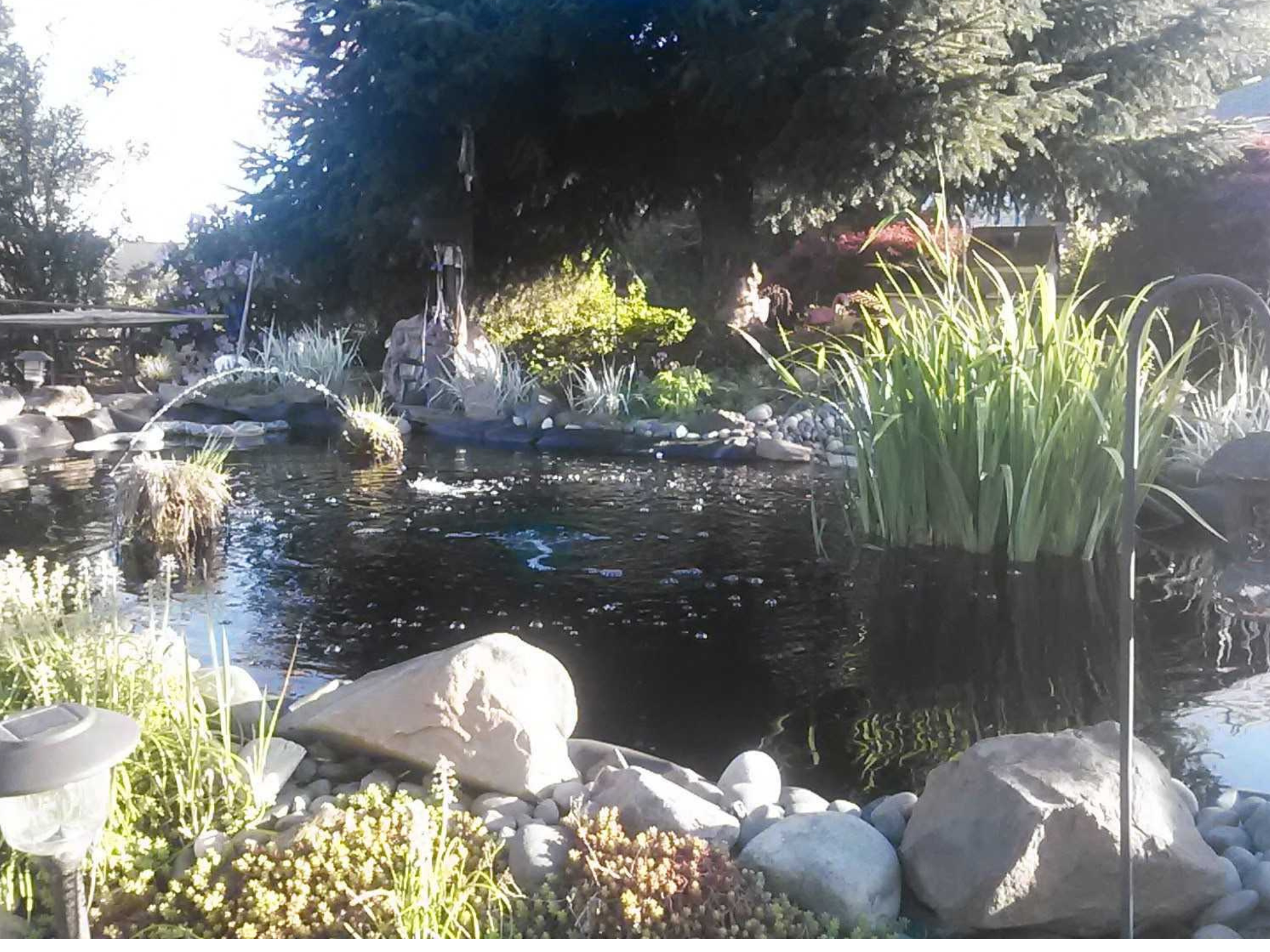Every epic tale of creation starts with a simple itch, a feeling that the backyard is missing something grand. For Rudy Herold, nestled in the green, rolling landscapes of Battle Ground, Washington, that itch began nearly two decades ago. It wasn't about hiring a crew; it was about getting his hands dirty and building something beautiful from the ground up.
This is the story of how a small, ignorant hole in the ground evolved into a magnificent, hand-dug, 4,000-gallon sanctuary: The Taj Mahal of Koi.

From Goldfish Hole to Hard Lessons
Rudy's origin story is like most: innocent and underestimated. "I just decided I wanted a pond," Rudy recalls. It was a modest affair, maybe 30 or 50 gallons, dug around some trees. He dropped in a liner, added a few goldfish, and called it good. "Didn't know my butt from a hole in the ground back then," he admits with a laugh.
But the real journey began with a painful, yet necessary, lesson in the wild Pacific Northwest. When his pond grew to 750 gallons, it was only a foot deep. One season, disaster struck: a raccoon.
"I lost all my koi one season—a raccoon came in and took them."
That was the turning point. Rudy hit the books. He learned that survival for a koi in the wild requires depth. The solution was clear: the new pond would be roughly 21 feet long, 10 feet wide, and a solid 3 feet deep, swelling his aquatic project to a massive 4,000 gallons.

The Thousands of Wheelbarrows
Every builder faces a moment of reckoning. For Rudy, it was the shovel. With existing pea gravel landscaping surrounding the area, bringing in heavy machinery was out of the question. He made a conscious, almost legendary, choice: he would dig the massive hole by hand.
"I kept the old pond active, dug out the new perimeter, and then I just did 10 wheelbarrows of dirt a day for about two weeks," Rudy recounts. We're talking hundreds of wheelbarrows of back-breaking, Washington dirt. It was a Herculean effort that redefined the term 'DIY.' When he finally stood in the installed liner, his wife remarked, "Are you digging a pool?" He was a pool for his koi.
Rudy’s ingenuity didn’t stop at the shovel. To ensure optimal water health, he engineered a sophisticated circulation system using a submersible pump and a T-junction in the main line. One line feeds the stream and filter; the other runs a smaller hose all the way around the pond to create constant movement, what he calls his “tidy bowl” effect. This continuous flow is the unsung hero keeping the 4,000 gallons healthy.
Life in the Taj Mahal
The struggle of the dig gave way to the joy of the finish. Rudy's entire backyard is now centered around this aquatic creation. With river rock, lava rock, and meticulously placed greenery, visitors consistently tell him, "Your yard looks like a park."
And the residents? They have personalities. There’s the territorial bullfrog, Freddy the Frog, and the spunky, all-orange female koi, Mango. Rudy is out there 100 times a day, observing their habits, especially as the cool Washington weather pushes them into hibernation.
The biggest surprise for Rudy wasn’t the labor, but the delicate science of pond balance. Algae was a constant battle until he settled on a routine of muck defense, nature’s defense, and the simple, effective hack of pond dye to shade the water. His aquatic secret weapon? Water Hyacinths, which are “multitaskers” that filter the water while offering the fish a root system to snack on.
The Builder's Wisdom: Don't Go Alone
After two decades in the pond trenches, Rudy has critical advice for anyone standing on the fence, dreaming of their own backyard paradise:
-
Double Your Budget: "If you're thinking of spending $1,000 to get started, plan on spending $2,000," he advises. The pump, the filter, the aerator, and the tubing all add up fast.
-
Backup is Non-Negotiable: Have a backup pump ready. When those submersible units fail, there’s no quick fix.
-
Practice Quarantine: Never add new fish to your existing herd without quarantining them first.
Today, his pond is his "quiet spot", a stable, beautiful sanctuary that rewards his immense effort. The next dream? Finding that perfect, heat-tolerant plant, like Creeping Jenny, to finally grow over the liner and complete the natural look.
Rudy’s journey proves that the hardest builds yield the greatest reward. If you're on the fence about digging that hole, just remember: your own backyard Taj Mahal is waiting.

